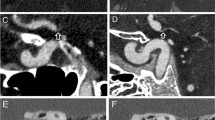Abstract
Objective
To comprehensively and accurately analyze the out-performance of low-dose chest CT (LDCT) vs. standard-dose CT (SDCT).
Methods
The image quality, size measurements and radiation exposure for LDCT and SDCT protocols were evaluated. A total of 117 patients with extra-thoracic malignancies were prospectively enrolled for non-enhanced CT scanning using LDCT and SDCT protocols. Three experienced radiologists evaluated subjective image quality independently using a 5-point score system. Nodule detection efficiency was compared between LDCT and SDCT based on nodule characteristics (size and volume). Radiation metrics and organ doses were analyzed using Radimetrics.
Results
The images acquired with the LDCT protocol yielded comparable quality to those acquired with the SDCT protocol. The sensitivity of LDCT for the detection of pulmonary nodules (n=650) was lower than that of SDCT (n=660). There was no significant difference in the diameter and volume of pulmonary nodules between LDCT and SDCT (for BMI <22 kg/m2, 4.37 vs. 4.46 mm, and 43.66 vs. 46.36 mm3; for BMI ≥22 kg/m2, 4.3 vs. 4.41 mm, and 41.66 vs. 44.86 mm3) (P>0.05). The individualized volume CT dose index (CTDIvol), the size specific dose estimate and effective dose were significantly reduced in the LDCT group compared with the SDCT group (all P<0.0001). This was especially true for dose-sensitive organs such as the lung (for BMI <22 kg/m2, 2.62 vs. 12.54 mSV, and for BMI ≥22 kg/m2, 1.62 vs. 9.79 mSV) and the breast (for BMI <22 kg/m2, 2.52 vs. 10.93 mSV, and for BMI ≥22 kg/m2, 1.53 vs. 9.01 mSV) (P<0.0001).
Conclusion
These results suggest that with the increases in image noise, LDCT and SDCT exhibited a comparable image quality and sensitivity. The LDCT protocol for chest scans may reduce radiation exposure by about 80% compared to the SDCT protocol.
Similar content being viewed by others
References
Mortazavi SMJ. Comments regarding: “Occupational exposure to high-frequency electromagnetic fields and brain tumor risk in the INTEROCC study: An individualized assessment approach”. Environ Int, 2018,121(Pt 1):1024
National Lung Screening Trial Research Team, Aberle DR, Adams AM, et al. Reduced lung-cancer mortality with low-dose computed tomographic screening. N Engl J Med, 2011,365(5):395–409
National Lung Screening Trial Research Team, Aberle DR, Berg CD, et al. The National Lung Screening Trial: overview and study design. Radiology, 2011,258(1):243–253
Gartenschläger M, Schweden F, Gast K, et al. Pulmonary nodules: detection with low-dose vs conventional-dose spiral CT. Eur Radiol, 1998,8(4):609–614
Rusinek H, Naidich DP, McGuinness G, et al. Pulmonary nodule detection: low-dose versus conventional CT. Radiology, 1998,209(1):243–249
Baldwin DR, Callister ME. Guideline Development Group.The British Thoracic Society guidelines on the investigation and management of pulmonary nodules. Thorax, 2015,70(8):794–798
MacMahon H, Naidich DP, Goo JM, et al. Guidelines for management of incidental pulmonary nodules detected on CT images: from the Fleischner Society 2017. Radiology, 2017,284(1):228–243
Heuvelmans MA, Vliegenthart R, Oudkerk M. Contributions of the European trials (European randomized screening group) in computed tomography lung cancer screening. J Thorac Imaging, 2015,30(2): 101–107
Han D, Heuvelmans MA, Oudkerk M. Volume versus diameter assessment of small pulmonary nodules in CT lung cancer screening. Transl Lung Cancer Res, 2017, 6(1):52–61
McCollough C, Bakalyar DM, Bostani M, et al. Use of Water Equivalent Diameter for Calculating Patient Size and Size-Specific Dose Estimates (SSDE) in CT: The Report of AAPM Task Group 220. AAPM Rep, 2014,2014:6–23
Christner JA, Braun NN, Jacobsen MC, et al. Size-specific dose estimates for adult patients at CT of the Torso. Radiology, 2012,265(3):841–847
Leng S, Shiung M, Duan X, et al. Size-specific Dose Estimates for Chest, Abdominal, and Pelvic CT: Effect of Intrapatient Variability in Water-equivalent Diameter. Radiology, 2015,276(1):184–190
Valeri G, Cegna S, Mari A, et al. Evaluating the appropriateness of dosimetric indices in body CT. Radiol Med, 2015,120(5):466–473
Cléro E, Vaillant L, Hamada N, et al. History of radiation detriment and its calculation methodology used in ICRP Publication 103. J Radiol Prot, 2019,39(3):R19–R36
ICRP. The 2007 recommendations of the International Commission on Radiological Protection. ICRP publication 103. Ann ICRP, 2007,37(2–4):1–332
Prakash P, Kalra MK, Ackman JB, et al. Diffuse lung disease: CT of the chest with adaptive statistical iterative reconstruction technique. Radiology, 2010,256(1):261–269
Bueno J, Landeras L, Chung JH. Updated Fleischner Society Guidelines for Managing Incidental Pulmonary Nodules: Common Questions and Challenging Scenarios. Radiographics. 2018,38(5):1337–1350
Fujii K, McMillan K, Bostani M, et al. Patient Size-Specifc Analysis of Dose Indexes From CT Lung Cancer Screening. AJR Am J Roentgenol, 2017,208(1):144–149
Weis M, Henzler T, Nance JW Jr, et al. Radiation dose comparison between 70 kVp and 100 kVp with spectral beam shaping for non-contrast-enhanced pediatric chest computed tomography: A prospective randomized controlled study. Invest Radiol, 2017,52(3):155–162
Gabusi M, Riccardi L, Aliberti C, et al. Radiation dose in chest CT: Assessment of size-specific dose estimates based on water-equivalent correction. Phys Med, 2016, 32(2):393–397
Leipsic J, Nguyen G, Brown J, et al. A prospective evaluation of dose reduction and image quality in chest CT using adaptive statistical iterative reconstruction. Am J Roentgenol, 2010,195(5):1095–1099
Liang M, Yip R, Tang W, et al. Variation in screening CT-detected nodule volumetry as a function of size. Am J Roentgenol, 2017,209(2):304–308
E Linning, Ma DQ. Volumetric measurement pulmonary ground-glass opacity nodules with multi-detector CT: effect of various tube current on measurement accuracy—a chest CT phantom study. Acad Radiol, 2009,16(8): 934–939
Franck C, Vandevoorde C, Goethals I, et al. The role of Size-Specific Dose Estimate (SSDE) in patient-specific organ dose and cancer risk estimation in paediatric chest and abdominopelvic CT examinations. Eur Radiol, 2016,26(8):2646–2655
Author information
Authors and Affiliations
Corresponding author
Ethics declarations
We declare that we have no conflicts of interest.
Rights and permissions
About this article
Cite this article
Hu, Qj., Liu, Yw., Chen, C. et al. Prospective Study of Low- and Standard-dose Chest CT for Pulmonary Nodule Detection: A Comparison of Image Quality, Size Measurements and Radiation Exposure. CURR MED SCI 41, 966–973 (2021). https://doi.org/10.1007/s11596-021-2433-z
Received:
Accepted:
Published:
Issue Date:
DOI: https://doi.org/10.1007/s11596-021-2433-z




